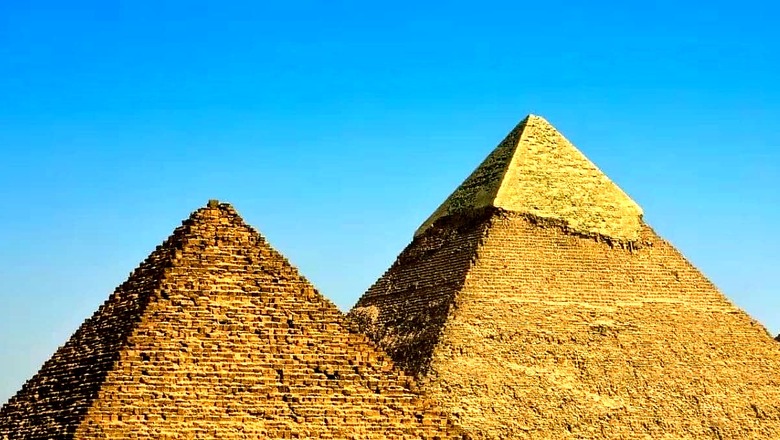
views
The pyramids of Egypt are some of the most magnificent man-made structures in the world. For decades researchers and historians wondered how ancient Egyptians managed to build these massive structures without the presence of modern technology. The most plausible theory about how pyramids were built says that they were formed with the use of ramps and sledges. But many researchers still grappled with the question of “friction” and wondered how the ancient Egyptians countered the friction created by dry sand.
This doubt was cleared with the help of a wall painting painted in the tomb of Djehutihotep, reported Ladbible. The painting shows a group of Egyptians pulling a massive statue of a pharaoh on a wooden sledge. Curiously, one person is seen pouring water in front of the wooden sledge.
In a 2014 study, researchers at the University of Amsterdam interpreted this act of water pouring, as seen in the wall painting, as a way of reducing the friction created by the dry sand. It is understood that if one pulls a heavy wooden sledge over dry sand, a layer of sand would collect in front of the sledge, thus making the pulling difficult. However, if this dry sand is flattened with water, this friction can be mitigated, hence making the pulling much easier.
The researchers tested this hypothesis by creating a laboratory version of an Egyptian sledge in a bin of sand. They first tried to pull the sledge over dry sand and saw how sand collected in front of the sledge. When they added some water to the sand in front of the sledge, the sand turned stiff and one could pull the sledge over it without fighting against the collected sand.
The researchers concluded that the appropriate level of wetness on sand created “capillary bridges” that glued together individual grains of sand. Physicist Daniel Bonn who was part of the study told The Washington Post, “I was very surprised by the amount the pulling force could be reduced, by as much as 50 per cent, meaning that the Egyptians needed only half the men to pull over wet sand as compared to dry.”
For the longest time, Egyptologists interpreted the water pouring seen in the above-mentioned painting as part of a “purification ritual” but now we know that it served a practical purpose.




















Comments
0 comment